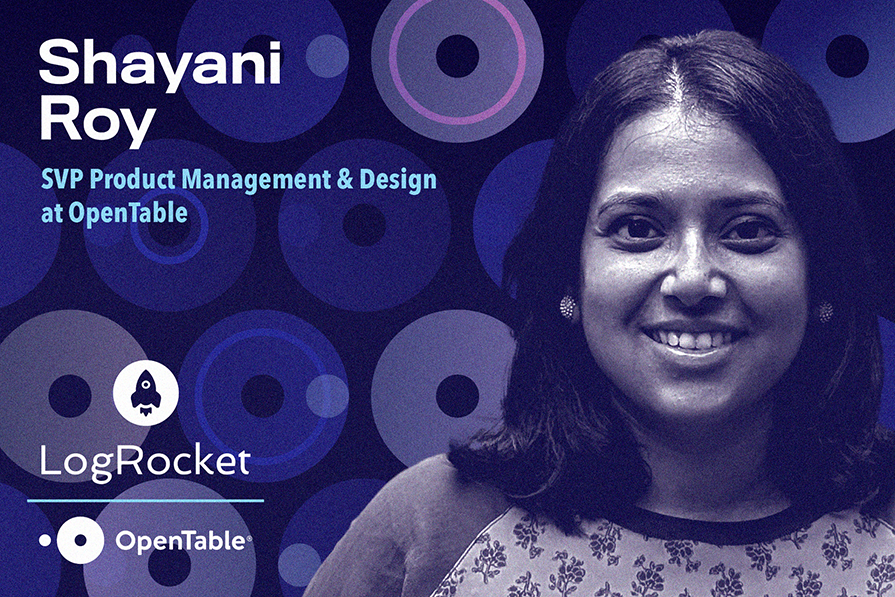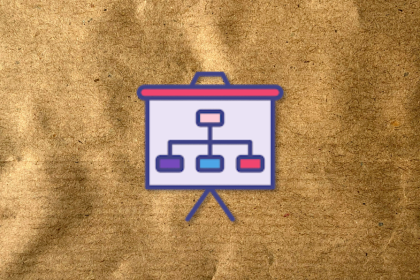Shayani Roy is SVP of Product & Design at OpenTable. She began her career in systems engineering at Rockwell Collins’ Flight Management System team. After business school, Shayani joined SurveyMonkey, where she worked her way up to VP of Product Management for the Surveys and Wufoo businesses. Prior to her current role at OpenTable, she served as Director of Product Management at Meta.

In our conversation, Shayani talks about balancing innovation with speed, thoughtfulness, and commitment to solving customer problems. She shares how she allocates resources for “big rocks” on the roadmap and prioritizes innovative projects that are more long-term bets. Shayani also reflects on the transition from being an individual contributor PM to leading product functions and offers insights for others who are embarking on that journey.
I feel that innovation is an output of a culture. If you work in an environment that has a systemic process to cultivate curiosity, it’s important to translate that into action. When you put those two together, you generally get innovation. I like to spend time thinking about how I can nurture those two pillars.
I believe that curiosity can be modeled. When you have senior leaders at the company who ask questions as a way to guide decisions, that model is carried throughout the organization. That culture of asking questions without judgment can oftentimes lead you down paths that you otherwise may not have thought about. This is similar to outside-in thinking, where you look at the market and customers you don’t yet have to really open your aperture and shape how you could be thinking, instead of just iterating in your own box.
Another thing I’ve found useful is to dig into net promoter scores. Many companies evaluate NPS scores, but often focus on the top and the bottom: the promoters and the detractors. Instead, I find a lot of real value comes from looking at the passives — the people who are not in love with your product and think it’s “meh.” How do you get them excited? There’s a lot to unlock in terms of innovative ideas that come within that layer.
It’s also really important to focus on creating a culture with a bias for action. As an organization, you need to find and invest in people who are doers and like leaving things in a better spot than where they found them.
Lastly, you have to make space for innovation. If your roadmap is fully locked and loaded with short-term things, then finding space for new things will be hard. As a product leader, you need to make sure you dedicate a portion of your roadmap to learning and long-term things that might not yield revenue this year, but could have a meaningful impact in the future.
I look for curiosity when hiring, as well as proactiveness — people who routinely go above and beyond their job descriptions. Those things are really valuable. I also like when candidates provide examples that show that they really pulled the thread on something that was not super obvious, but eventually led to an important finding. That being said, I’m a big believer that modeling behavior inspires others as well. I also believe that when you’re immersed in a culture that promotes curiosity, people will really embrace that part of themselves.
In our annual planning, we include a “big rock” process that allows us to be intentional about our biggest priorities and where we have room to move things around. We allocate a percentage of our headcount to those big rock initiatives each year, and then everything else has to fit what’s left. The company aligns around these big rocks, and we create OKRs around them, which helps make sure our day-to-day tasks are in pursuit of our ultimate goals.
We’re always looking to innovate to serve our two audiences. For example, one of our big rocks this year is an innovation project where we don’t have detailed metrics for it yet, so we have to establish goals in a different way. One option is to have an ambitious stretch goal that people feel comfortable not hitting. Another approach is to assign a leading indicator metric. It all comes down to finding the right metric that will show that the idea has legs. Once you confirm that, you can prioritize investment for the following year.
Feedback is the center of everything. If you don’t start with the intent to solve a crucial need for a customer, you’re just vetting cool technology, and that is not likely to succeed. You need to drive actual impact. Start with a deep customer problem that you can find interesting ways of solving that haven’t been solved before, whether through technology or a series of technologies.
I like talking to other companies that are popping up in adjacent spaces because they often apply things in different ways. They’re often addressing a problem that I didn’t know existed, so I’m always learning from them. Of course, you can also look at your own industry and competitors, but taking inspiration from other places is often the most impactful.
Apart from those things, I read a lot. I spend a lot of time listening to podcasts and audiobooks. I look for inspiration in different industries or companies that could be relevant to us. Oftentimes, we are solving a problem with blinders on, so it really helps me take a step back and consider other perspectives.
When I was at SurveyMonkey, we noticed that many users struggled to create a survey. They didn’t feel confident in what they were creating, and they would often start a survey, get stuck, and never send it. We set out to solve that confidence problem, exploring many different solutions, including AI.
This was 10 years ago, so AI was an uncommon and unfamiliar domain, and our earliest iterations were rule based. We used technology to communicate with our users to say, “Hey, we noticed you’re creating this survey. Maybe you want to think about designing it this way,” or, “We found an error. Here’s how you can solve it.” This gave users confidence in what they created and addressed our issue of unsent surveys.
The results of this initiative were wildly successful, so we looked for other places in the product where people got stuck. We looked for areas where users were spending a lot of time trying to make a high-stakes decision, but weren’t able to find the insights they needed. We also had an incredible ML/DS team and really pushed us to use new models to process large sets of text data quickly. This was an example of starting with a problem and then using innovative technology solutions to disrupt how we would solve it.
Over time, we became bolder in our recommendations. It created a big differentiator in the market and became an important part of our product line. The initiative wasn’t about how to use AI — it was about finding ways to make our customers more successful.
Something I like to do is play it forward. I say, “OK, let’s say this happens. Let’s say we launch this, and this scenario occurs. What is the worst that could happen?” Once you spell it out, it’s easier to look at the possible circumstances and the realistic chances of them happening. From there, you can build guardrails and figure out a contingency plan.
I find that once people look at these possibilities in front of them and see the likely scenarios, they feel more relaxed. We can test and learn, so even if the worst-case scenario does happen, we can walk back. We can be confident in taking that risk when we go into it.
I think it comes down to what you’re doing being significant enough to users that they’re willing to take any pain around it. It’s about putting a product out there that you can iterate on as it continues to move along, as opposed to holding it back and perfecting it before you release. It’s common to want to build something that everyone is going to like right out of the gate, but you really need to use feedback to guide the next step — don’t worry about getting everything perfect on the first iteration.
For example, if you have five problems that you’re trying to solve at the same time for different users, you end up going in circles trying to get alignment. You need to stay very opinionated about who the product is for and what the real problem is that you’re trying to solve. That gives you more conviction and increases risk tolerance within your organization because you can demonstrate that you’ve solved a problem for your key audience.
I really enjoy building. That was important to me when I was an IC. The main inflection point for me was knowing what the company was trying to solve for and being able to help other areas in the company be successful in executing on that. A leader has to care about the company’s success, whereas when you’re an IC, you’re thinking about your projects, your team, and your segment of a particular product. Broadening your scope is a big inflection point in the transition from manager to leader.
The second point is taking accountability for goals that are not wholly owned by your team or your work. For example, I can support a lot of areas, but I’m not accountable for them. What happens when you have to take accountability for them? You may co-own the goal and some of the resources, or you may have to work across organizations. It conflicts with agency a little bit, and that’s a skill set that needs to be built.
It comes down to operating on multiple levels when needed. There are many similarities in what my team needed from me when I was an IC product manager compared to now. One of those similarities is inspiring larger parts of the organization and creating a North Star. That skill set starts when you’re an IC, and as a leader, the team is just larger. The concept doesn’t necessarily change.
Also, you’re not just evangelizing — you’re unlocking decisions faster. How do you help with execution when things are blocked? To do that, you need to be able to get into the decision and the details. While I might not have the details all the time, I need to be able to get in there quickly and not lose time gathering context. A big part of this role is to streamline decision-making at the company and help teams drive toward impact. The more time you need to context switch and ramp on and ramp off, the harder it is.
I don’t think that you need to have a title to be a leader, but I do think that you need to lead with a point of view. The faster you can figure out a way to develop points of view on complex things and share them externally, the better you get. I encourage my team to start developing a point of view and share it, even if it’s not in their immediate area of expertise. How do you help the organization be successful? Lead with that point of view and be unafraid to communicate it.
Also, especially as you become a people manager, there’s a natural distance that occurs. It’s super important to continue to be a doer. Certainly, you should pick and choose the things that you do, but the best functional leaders find ways to stay immersed in the function. Figure out how to create value and move things forward by doing impactful things yourself when needed.

LogRocket identifies friction points in the user experience so you can make informed decisions about product and design changes that must happen to hit your goals.
With LogRocket, you can understand the scope of the issues affecting your product and prioritize the changes that need to be made. LogRocket simplifies workflows by allowing Engineering, Product, UX, and Design teams to work from the same data as you, eliminating any confusion about what needs to be done.
Get your teams on the same page — try LogRocket today.

A practical five minute revenue estimation method to help product managers compare ideas, drop low impact features, and prioritize smarter.

A practical guide for PMs who want to stop being bottlenecks, delegate smarter, and lead teams effectively with a clear ownership framework.

Stop letting unreliable data block features. Treat data as inventory to track quality, ownership, and ship with confidence.

Learn why slide decks slow teams down and explore better tools like whiteboards, PRDs, and prototypes to improve collaboration and alignment.